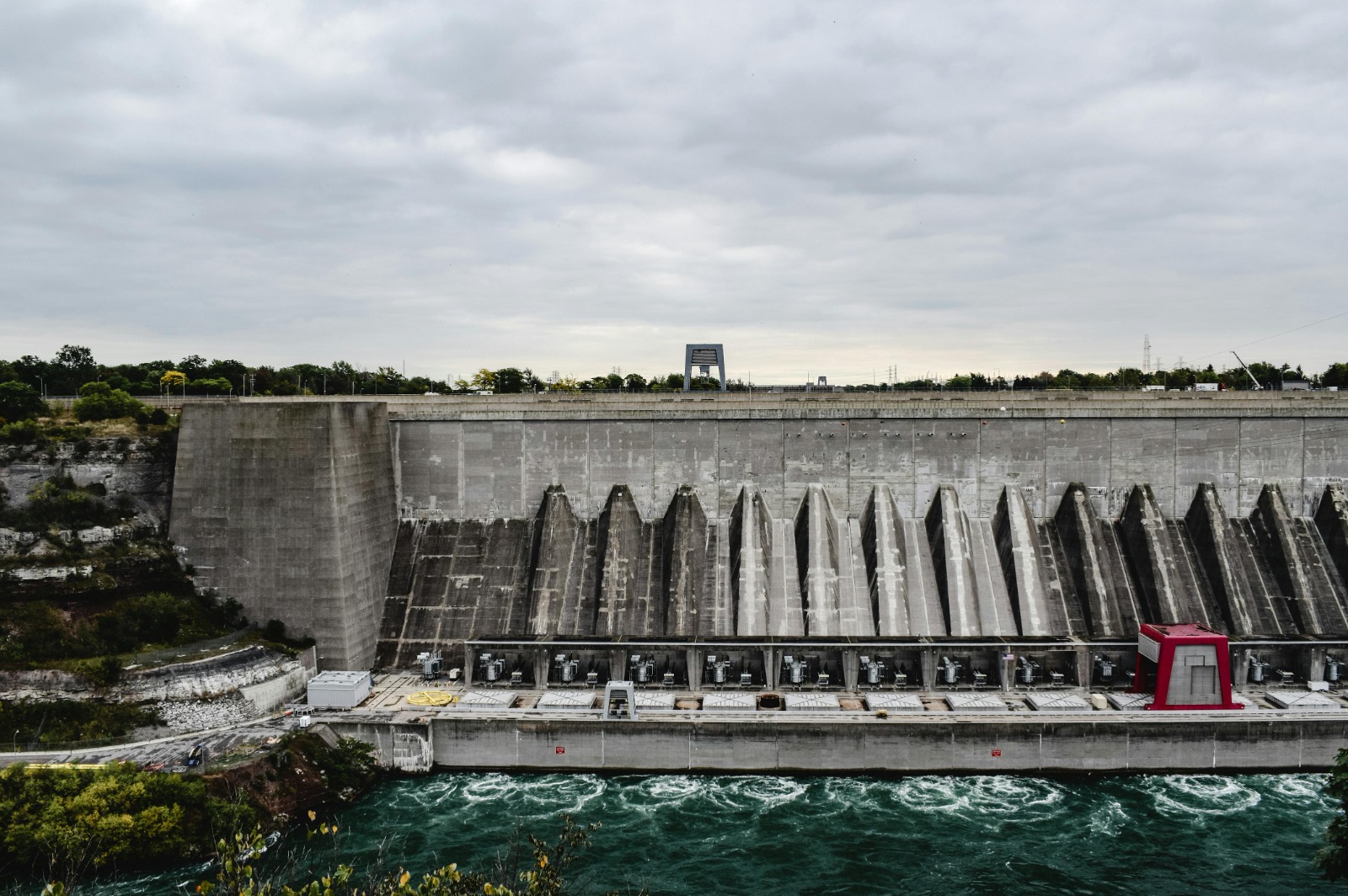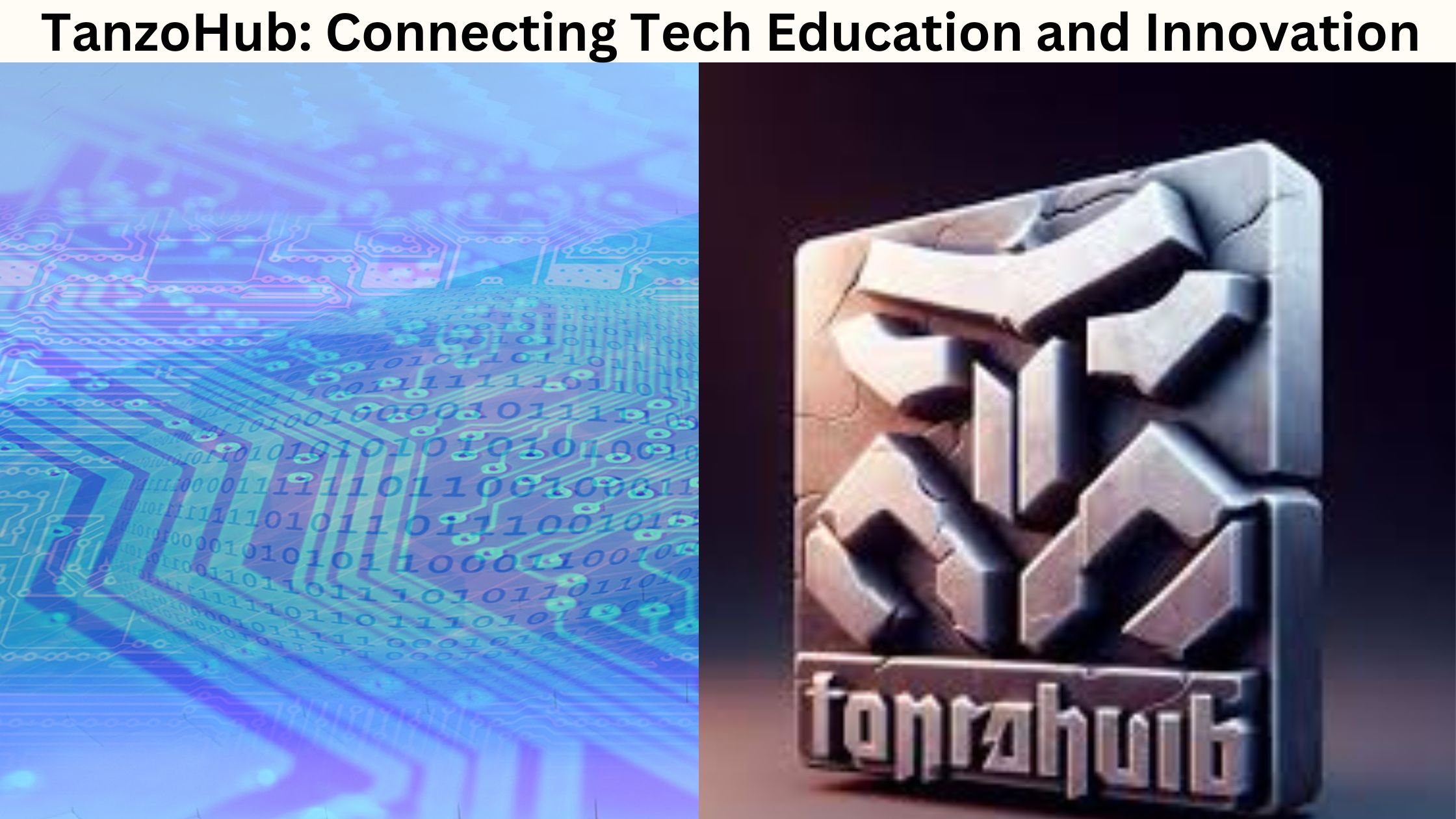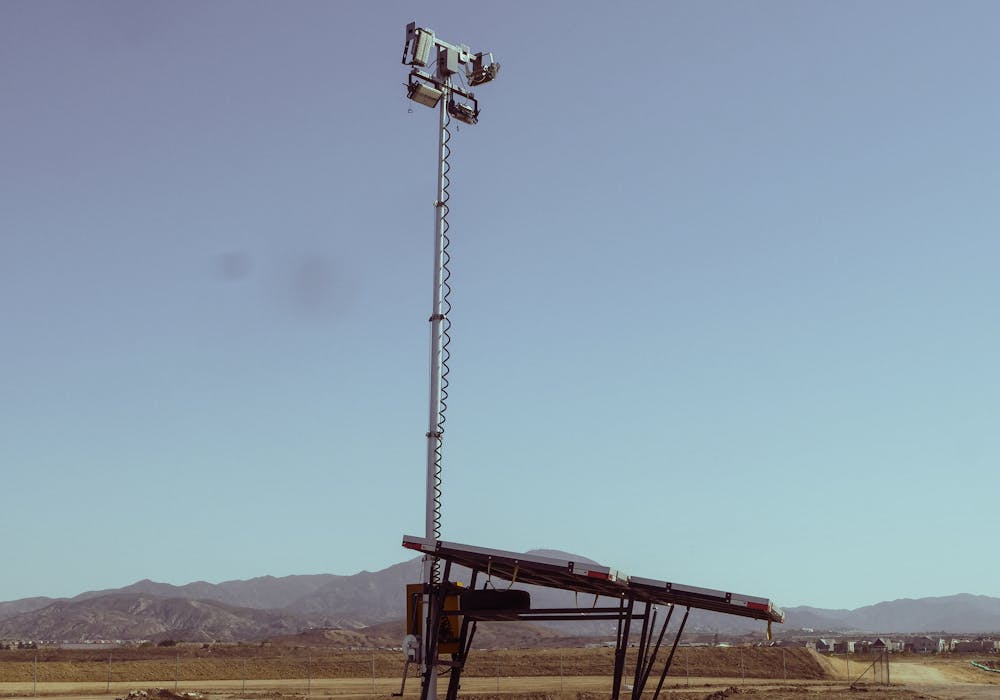Tech
The Pros and Cons of Hydropower

Hydroelectric energy, highlighted in the discussion on the pros and cons of hydropower, is widely utilized as a renewable energy source globally. A hydroelectric or hydroelectric generator, integral to this analysis, harnesses water flow to drive a turbine connected to a generator. The movement of the turbine rotates the generator, effectively producing electricity. Explore the benefits and drawbacks of this innovative energy solution to gain deeper insights into its role in sustainable power generation.
What is Hydroelectric Energy?
Hydroelectric energy is a renewable energy source like wind and solar energy. Among other renewable energy sources, the type of energy with the most well-established technology belongs to hydroelectricity. It is known that the power of water has been used since the early periods of civilization. People benefited from hydroelectric energy thanks to water mills and boats. Before the industrial revolution in the 19th century, water mills provided power for many production activities. However, due to technological inadequacies, the energy produced could not be stored and was insufficient for industrialization, which led people to turn to other fossil fuels, especially coal.
Hydraulic energy provides benefits in various fields such as modern agriculture, irrigation, tourism and sports activities. But the most important of all is the production of electricity. Today, thanks to water turbines, kinetic energy is obtained from the power of water. The first hydroelectric power plant was established in America in 1882. In 2016, the world’s largest hydroelectric power plant was established in China. It is known that this power plant has a production capacity of 22,400 MW.
How Does Hydroelectric Energy Work?
Water has high potential energy when stored behind the dam. When this water is released towards the turbines, this potential energy turns into kinetic energy. When water spins turbines, the turbines are connected to a generator and this rotational motion produces electrical energy.
How to Classify Hydroelectric Power Plants?
Hydroelectric power plants are classified according to 6 separate criteria. These criteria are as follows:
- According to storage method
- According to installed power
- According to the typology of the dam body
- According to the capacity to meet the needs of the national electricity system.
- Depending on the location of the power plant building.
What are the Types of Hydroelectric Power Plants?
Depending on the type of development, hydroelectric power plants can be divided into three types:
Water Retention Facilities: A large-scale water reservoir is obtained by establishing dams. The most common use of hydroelectric power plants is through dam installation. Electrical energy is produced by the water passing through the turbines in the dam.
Pumping Facilities: Pumping facilities are established as a second water reservoir at the bottom of the established dams. Pumping facilities are very similar to water retention facilities. Water stored for future use can be pumped to the upper reservoir when needed.
Stream Facilities: Electrical energy obtained from natural water flow. Part of the stream passes through turbines. Dam installation is not possible.
Part of a hydroelectric power plant
The hydroelectric power plant consists of the following parts:
Dams: These are responsible for intercepting rivers and maintaining water bodies (for example, reservoirs) before containment, creating a difference in the water used for energy production. Dams can be made of mud or concrete (most commonly used).
Spillway: They are responsible for releasing some of the water that stops passing through the engine room and can be used for irrigation needs. They are located on the main wall of the dam and can be bottom or surface. Huge amount of water is lost in the basin at the foot of the dam to avoid damage when the water falls.
Water intake : They are responsible for collecting the intercepted water and transporting it to the machine through forced channels or pipes. The water inlet has a gate to regulate the amount of water reaching the turbine and a filter to prevent the passage of foreign objects (logs, twigs, etc.).
Power plant : The machine (generator turbine, hydraulic turbine, shaft and generator) and control and regulation elements are located here. Has an inlet and outlet to leave the machine area without water during maintenance or disassembly.
Hydraulic turbines : They are responsible for using the energy of the water passing through them to produce rotational movement through their own axis. There are three main types:
- Pelton wheel,
- Francis turbine, and
- Kaplan turbine (or propeller).
Transformer – An electrical device is used to adjust the voltage in an alternating current circuit while keeping the power steady. This device can increase or decrease the voltage as needed.
Power transmission lines : cables that transmit the generated energy.
What are the Usage Areas of Hydroelectric Power Plants?
Electricity Production: Hydroelectric energy is mainly used to produce electrical energy. Hydroelectric power plants are favored due to their lower cost and less harmful impact on the environment compared to other energy sources. The installation of hydroelectric power plants is increasing because it does not pose serious threats to nature and human life, as in the installation of fossil fuels and nuclear power plants.
Agriculture: Thanks to hydroelectric energy, large agricultural areas can be irrigated. Flour can be produced by grinding grain with mills built with the power of water. The first civilization in history to establish hydroelectric power plants for the purpose of agricultural irrigation activities was the Egyptian civilization.
Industrial Use: It is known that bellows were driven by the establishment of hydroelectric facilities in the ancient civilization ages.
Use to Close the Energy Gap: As fossil fuels such as gasoline, coal and natural gas are becoming depleted, the trend towards other natural resources has increased to meet the energy needs. In addition to solar and wind energy, water power is also utilized in this context.
Pros of Hydroelectric Energy
There are a number of examples with the advantages of hydroelectric energy, also known as dams. Compared to fossil energies, this type of energy is a promising technology. Let’s see the advantages of this type of energy obtained from the movement of water.
It is a renewable and sustainable energy
The kinetic energy of flowing water is used to generate electricity from hydroelectric energy. Although it may cause some difficult and environmental climate problems, it is currently a strong and sustainable energy source.
It is an eco-friendly and clean energy source
The energy produced by hydroelectric power plants does not create toxic or greenhouse gasses that pollute the atmosphere. They release less greenhouse gasses than fossil-based power sources. This helps reduce climate change, acid rain and smog. It can also improve air quality because they do not emit air pollutants.
It is a useful system for sustainable development
Can develop in an economically viable, environmentally sound and socially responsible manner. Hydroelectric enterprises operated in this way represent the best concept of sustainable development. It attracts various industries and provides an overall boost to trade.
It is the country’s domestic power source
Unlike fossil fuels, hydroelectric production does not require the system to be transported over long distances. There is no mining involved in the hydroelectric production in question. The power plant installed will convert water into energy.
Supports guaranteed energy and price stability
Despite expensive upfront building costs, hydroelectric power plants are a cost-competitive energy source. River water is a domestic resource that, unlike fuel oil or natural gas, is not subject to market fluctuations.
In addition, it is the single largest source of renewable electricity. The cost-benefit ratio, efficiency, flexibility, and reliability of thermal power plants contribute to optimizing their use.
Creates jobs and employment
Hydroelectric power plants are beneficial for regions with high unemployment rates. Building these plants provides job opportunities and enhances living standards for the local community. This leads to a rise in average income, boosting consumption and tax revenues.
Contributes to the development of remote communities
Hydroelectric power plants provide electricity to remote communities. It attracts the construction of highways, industry and commerce. All these activities are aimed at stimulating the economy of these remote areas and increasing access to education and healthcare. And it serves to improve the overall quality of life of residents.
Creates entertainment and tourism opportunities
The lake formed behind the dam can be used for activities such as fishing, boating and swimming. The water of the lake can also be used for irrigation purposes. Apart from this, large dams are becoming a hotspot for tourist attractions. It could provide an economic boost to nearby towns.
Cons of Hydroelectric Energy
Hydroelectric energy has advantages as well as disadvantages. The negative effects of these power plants are generally on the environment and local ecology. Here are some definite cons of hydroelectric power.
Environmental Impact
Disruption of natural water flow can have a huge impact on the environment and river ecosystem. Hydroelectric facilities may affect the lands in the dam area, forests, swamps and grasslands in the valley. Reservoirs can include people’s homes, natural areas, and farmland.
Areas that were previously covered with water may dry out, and dry ones may become covered with water. In turn, many animal and plant species may be mixed due to these changes in natural habitats. This may cause species to decline. It can also lead to imbalance in local ecosystems.
High construction costs
Constructing these plants and dams can be incredibly expensive. Additionally, projects take a long time to complete. It will need to be operated for a long time to earn back the money spent on construction.
Limited reservoirs
Although water is an unlimited resource, the conditions required to build a dam are limited. For the efficient production of hydroelectricity, large rivers or streams that will provide sufficient water are needed. It is difficult to find a suitable location that has a large water supply throughout the year, the right amount of water, and is close enough to existing power lines.
Drought potential is high
If hydroelectric energy is to be established, water abundance and drought cycles should be taken into consideration. This usually occurs in areas with local drought.
Border conflicts may occur
Rivers often represent the border between two countries. Decisions regarding the construction of hydroelectric power plants are in question. Both countries need to agree that this construction meets the goals of both countries.
If one country wants to build a hydroelectric power plant and the other country does not, this could even lead to wars between countries in the worst case.
May cause relocation due to flood risk
The local population living in the area may become vulnerable to floods due to possible water flows from dams. As a result, people are forced to relocate to facilitate the construction of the dam needed to generate hydropower. According to the report published in 2000, the World Commission on Dams estimated that dams physically displaced 40-80 million people worldwide.
Causes deterioration of water quality
When dams are created, they limit water flow, which affects oxygen levels in the water. Lower oxygen levels behind the dam can also result in lower oxygen levels downstream. When there isn’t as much oxygen in the water, it’s harder for some fish species to survive, affecting river habitats.
Conclusion:
Do you think hydroelectric power plants should or should not be built according to their advantages and disadvantages? You can express your thoughts about the Advantages of Hydroelectric Energy in the comments. In this way, it can be determined whether the advantages or disadvantages of Hydroelectric Energy are dominant.
Read Also:
Tech
Introducing Amazon GPT-55X: Your Language Wizard!

In the fast-changing world of artificial intelligence (AI) and natural language processing (NLP), Amazon GPT 55-X shines as a powerful language tool. This advanced AI tech is changing how machines learn and understand language. Let’s explore what Amazon GPT-55X is all about — its uses, benefits, and how it’s changing the way we interact with technology.
How Does GPT-55X Work?
Ever wonder how it seems to understand everything you say? Amazon GPT-55X works by reading tons of stuff people write, like books and websites, and learning from all of it. Then, when you ask it something, it comes up with answers that sound just like a real person!
Why Amazon GPT-55X is Awesome
Language Mastery:
GPT-55X is a language wizard! It’s great at understanding what you mean, even if you don’t say it perfectly. Plus, it remembers stuff from earlier in the conversation, just like a real friend.
Multilingual Magic:
Speaking multiple languages? No problem! GPT-55X can chat with you in English, Spanish, Mandarin, and more!
Characteristics & Advantages of Amazon GPT-55X
Amazon GPT-55X introduces remarkable characteristics and advantages, each meticulously crafted to elevate the capabilities of businesses and individuals across diverse sectors.
Economical Solution
An eminent allure of Amazon’s GPT55X lies in its affordability. Despite its status as a sophisticated language model with state-of-the-art natural language processing abilities, it is priced competitively.
This accessibility ensures a wide array of users, ranging from burgeoning startups to sprawling enterprises, can harness the benefits of AI and advanced language processing prowess. Hence, financial constraints pose no hindrance to leveraging the benefits of cutting-edge technology.
Enhanced User Interaction
Amazon GPT-55X profoundly enhances user interaction. Whether integrated into customer service chatbots, virtual assistants, or online platforms, GPT55X comprehends and responds in colloquial language. It contextualizes conversations, rendering interactions more organic and gratifying for users. Such enhancements in buyer and user interaction foster heightened satisfaction and allegiance among customers.
Enhanced Productivity
The deployment of GPT55X by Amazon yields enhanced productivity. Its adeptness in managing tasks such as content generation, data scrutiny, and language interpretation liberates precious time for human employees to delve into more intricate and innovative endeavors. This expedites workflows and bolsters the human workforce’s value by enabling them to immerse themselves in more purposeful work.
Time Conservation
Another advantage of Amazon GPT55X is time conservation. Its instantaneous ability to process and assess copious amounts of data and produce text akin to human discourse significantly curtails the time requisite for various tasks. This efficacy proves especially advantageous in settings where swift turnaround times hold paramount importance.
Scalability
Scalability emerges as a critical trait of Amazon’s GPT55X. It seamlessly adapts to the ebbs and flows of business requirements, rendering it an ideal fit for projects and enterprises of all magnitudes. Whether grappling with minuscule-scale data analysis or monumental-scale content generation, GPT55X can accommodate the workload, furnishing consistent performance.
Adaptability
The adaptability of Amazon’s GPT55X stands unparalleled. It transcends confinement to a solitary or dual application. Its innate comprehension and processing of natural language render it suitable for multifarious purposes.
From empowering virtual assistants to enriching customer service systems, from facilitating intricate data scrutiny to enabling seamless linguistic translation.
Cool Things GPT-55X Can Do
Healthcare Helper:
GPT-55X can assist doctors by analyzing medical data and suggesting diagnoses. It’s like having a super-smart medical assistant!
Education Buddy:
If you’re struggling with homework, GPT-55X can personalize learning for you, help teachers grade papers faster, and even be a virtual teaching assistant.
Financial Guru:
GPT-55X can predict trends in the stock market, spot fraud, and even make investment decisions.It’s akin to having a financial advisor available round the clock!
Writing Partner:
Need help with writing? GPT-55X can offer suggestions, correct grammar, and even come up with topic ideas. It’s like having a personal writing coach!
Customer Service Champ:
GPT-55X powers chatbots that can help you with customer inquiries, provide support, and offer personalized recommendations.
Legal Eagle:
It can review legal documents, assist with legal research, and even predict the outcome of legal cases. It’s like having a super-smart lawyer on your side!
Ethical Considerations
While GPT-55X is super helpful, it’s important to think about things like fairness and privacy. We want to make sure everyone benefits from this awesome technology!
So, there you have it! Amazon’s GPT-55X is your language wizard buddy, ready to help you out with anything you need. Cool, right?
FAQs
What is GPT55X?
GPT-55X, or Generative Pre-trained Transformer 55X, is an advanced language model employing deep learning methods to produce text resembling human language. It builds upon Open AI’s GPT framework, enhanced by Amazon researchers with notable improvements.
What is Amazon’s AI platform?
Amazon AI encompasses a range of artificial intelligence (AI) services providing machine learning (ML) and deep learning technologies to customers of Amazon Web Services (AWS).
How long has Amazon been using AI?
From its inception in the late 90s, Amazon has been employing artificial intelligence, starting with personalized recommendations. By scrutinizing previous purchasing habits and browsing behaviors, Amazon’s recommendation system proposed products customized to individual customer tastes.
Read Also:
Tech
TanzoHub: Connecting Tech Education and Innovation

Amidst the modern age of digitalization, the attainment of wisdom assumes a crucial role in shaping our understanding of the surrounding world. With the rapid advancement of technology, platforms such as Tanzohub emerge as pioneers in revolutionizing the accessibility and interaction with knowledge. Within this discourse, we shall explore the innovative characteristics of Tanzo Hub and expound upon its influence on the domain of information retrieval.
The Conceptual Framework of TanzoHub
TanzoHub emerges as a cutting-edge platform that furnishes a seamless and intuitive avenue for accessing a diverse spectrum of information effortlessly. By using AI technology and data analytics, Tanzohub customized content based on what users like, their interests, and what they have looked at before. This personalized approach helps users stay up-to-date with the latest news and updates in their areas of interest without getting overwhelmed by too much information.
Distinctive Features of TanzoHub
Tailored Content Recommendations:
Tanzohub employs sophisticated algorithms to scrutinize user behavior and preferences, thereby furnishing content recommendations customized to individual users.
Cross-Platform Accessibility:
Users enjoy the convenience of accessing TanzoHub across multiple devices, ensuring a uniform and user-centric experience across various platforms.
Real-Time Updates:
TanzoHub delivers updates promptly on current events, trends, and pertinent information, ensuring users remain well-informed regardless of their geographical location.
Interactive Interface:
The platform boasts an interactive interface with seamless navigation, facilitating effortless content exploration and engagement.
The Advantages of TanzoHub for Users
TanzoHub offers a lot of advantages to users, rendering it an invaluable tool for staying informed and connected in today’s frenetic milieu.
Enhanced Knowledge Management
By furnishing a centralized platform for information retrieval, Tanzohub aids users in organizing and managing their knowledge effectively. Users can archive articles, videos, and other content for future reference, thereby curating a personalized repository of knowledge.
Augmented Learning Experience
The personalized content recommendations on TanzoHub foster continual learning and skill enhancement. Users have the opportunity to delve into new subjects, unearth relevant resources, and broaden their intellectual horizons effortlessly.
Heightened Productivity
With expeditious access to curated information, users can economize time spent scouring for pertinent content and concentrate on their tasks with heightened efficiency. Tanzohub streamlines the process of information retrieval, empowering users to remain productive and engrossed in their pursuits.
TanzoHub’s Future in Tech Education
As TanzoHub continues to innovate, it’s clear that traditional classrooms are evolving. Immersive worlds offer invaluable learning experiences in safe, limitless virtual domains. With TanzoHub Studio leading the way, tech education is becoming more personalized, engaging, and accessible than ever before.
Exploring TanzoHub’s Innovations
- TanzoHub Studio is at the forefront of interactive educational technology. It creates immersive metaverse environments where learners explore vibrant virtual worlds and gain hands-on experience with complex concepts.
- Augmented Reality (AR) enhances the learning process by overlaying visual elements onto real-world environments. TanzoHub’s AR-enabled metaverse supplements traditional learning materials with interactive 3D models and real-time simulations.
- Virtual events like concerts and festivals are reimagined in TanzoHub’s metaverse. These events transcend geographical barriers, offering users a sense of presence and community.
The TanzoHub App: Accessible Tech Education for All
The TanzoHub App ensures seamless learning across devices, from smartphones to desktops. It fosters collaboration and engagement through features like cross-device synchronization and real-time collaboration tools.
TanzoHub Marketplace: Where Culture Meets Technology
TanzoHub Marketplace celebrates art, wellness, and technology. From dance and theater classes to virtual weddings and events, it offers a diverse range of experiences tailored to users’ passions.
Gaming and eSports: TanzoHub’s Next Frontier
TanzoHub embraces gaming and eSports, blending entertainment, competition, and technology. It aims to create immersive experiences that engage users and set new standards in the gaming industry.
Fostering Social Connection Through TanzoHub’s Platforms
TanzoHub’s platforms promote global connection through speeches, presentations, and networking events. They provide opportunities for professionals to collaborate and innovate in a digital environment.
TanzoHub Founders: Visionaries in Tech Education
Mark Zviman and Alan Dai founded TanzoHub with a vision to revolutionize tech education. Their commitment to accessible and engaging learning experiences has driven TanzoHub’s growth from seed funding to industry prominence.
Conclusion:
Tanzohub is changing how people get and interact with information. It gives users a unique and effective experience tailored just for them. By harnessing the potential of AI and data analytics, Tanzohub is spearheading the transition towards a more informed and interconnected society.
Read Also:
StreamEast – An Outstanding online sports streaming platform
Tech
Everything you need to know about portable solar panels

Portable solar panels offer new freedom. They allow you to have a power supply everywhere. Space-saving and very efficient, they increase your autonomy on vacation and during all your travels.
What are portable solar panels?
Portable solar panels are miniature photovoltaic panels that convert the sun’s energy into electricity. They can power a charger or a portable battery. Lightweight and designed to be used everywhere, they allow you to charge all electronic devices : smartphone, camera, tablet, GPS, laptop, camera. With a panel measuring 32 x 17 cm and only 3 mm thick, you will be able to supply electricity to all your small devices such as smartphones or sports cameras. A 6W panel can produce 1500 to 3300 mAh per day.
Portable solar panels are suitable for all outdoor leisure activities: skiing, hiking or the beach. If you travel by motorhome, by boat or if you go trekking, you will considerably increase your energy autonomy.
The panel provides electricity directly or stores it in a miniature battery . This is external for high-power panels or integrated inside a module for extra-flat flexible panels . It is then possible to use the stored energy on cloudy days or even at night.
Portable solar panels offer efficiencies of 10% to 23%. Charging times are almost identical to those of the original chargers. If the panel is used live, one hour of charging provides 10 minutes of communication with a mobile phone.
Large models can be folded to save space. An unfolded panel of 47 x 21 cm takes up only 21 x 13.5 cm when folded. Reinforced eyelets make attachment easier. The weight of solar panels varies from 150 g to 2.5 kg. Smaller models have a USB connection.
More powerful panels offer a 12V or 18V output. High-end models are particularly efficient because they have most often been designed for military use. They are therefore suitable for intensive use, even in extreme conditions.
Two main types of portable solar panels
There are two types of portable solar panels:
single-layer panels:
There are two subtypes; monocrystalline silicon models and so-called amorphous models. Monocrystalline panels are the least expensive. Amorphous silicon panels are lighter and stronger but cost 20 to 30% more. The efficiency of amorphous silicon panels is lower (around 10%) but they can be used over a wider time range.
thin-layer flexible panels:
These so-called second or third generation panels are made up of several layers. They have excellent performance and remain effective even when the light is reduced. Several materials can be used for their design:
- amorphous silicon;
- and CIGS ;
- with CdTe;
- organic polymers.
Flexible solar panels are thin and light. They can fit anywhere. The multifunction panels allow you to recharge external batteries but also a laptop.
Main advantages and disadvantages
Solar chargers are very useful for all outdoor trips. Batteries have a limited useful life, so it can be very useful to have a backup electrical source when you spend several hours or several days without access to a fixed electrical installation.
The main advantages of portable solar panels are:
- their practicality : they are light, compact;
- their effectiveness : they are resistant and waterproof
- and their hardiness : they can withstand temperatures from -40° to +60°.
Besides their many advantages, portable solar panels do have some disadvantages:
Sometimes limited compatibility: you must ensure before purchasing that the portable panel is compatible with the devices to be recharged.
As mobile devices need a constant power supply to properly recharge their battery, it is advisable to use a buffer battery when the weather is cloudy,
Some high-power batteries require the use of a voltage regulator or solar booster to regulate the charge and protect the system.
Mobile solar panels are more expensive per 100 watt peak than regular solar panels.
For these reasons, it is recommended that you consider mobile solar panels if you want to use them in a place where there is no electricity grid. In that case, it is an excellent sustainable alternative to provide yourself with electricity. Do you want to use solar power at home? Then traditional solar panels are more efficient.
FAQs:
How does a portable solar battery work?
Solar panels generate direct electric current (DC), which is subsequently directed to the solar battery. The battery consists of reversible electrochemical accumulators, making it rechargeable. Subsequently, the energy extracted from the battery passes through the inverter.
What are the three types of solar panels?
There are three distinct types of solar panels, each with its own unique characteristics and energy production methods. These include thermal panels, photovoltaic panels, and hybrid models.
Which portable solar panel to choose?
Here are the top 4 solar kits of 2024:
Beem On 460 W solar station: priced at 629 euros.
EcoFlow PowerStream 800 W solar station: available for 1,011 euros.
Beem Energy 420 W solar station: starting from 699 euros.
Sunology Play 405 W solar station: starting from 749 euros.
Read Also:
Exploring the World of Mobile Houses: Advantages and Disadvantages
-

 Top2 years ago
Top2 years ago2022 US House committee releases Trump’s tax returns, capping a years-long battle
-

 Top2 years ago
Top2 years agoInterview With Niantic CEO John Niantsullivan
-

 News1 year ago
News1 year agoUSPS EMPLOYEE ASSISTANCE PROGRAM SERVICES AND BENEFITS
-

 Top1 year ago
Top1 year agoUnderstanding the Healing Process of Nose Piercings – A Comprehensive Guide
-

 Auto1 year ago
Auto1 year agoTop Porsche Taycan Incentives: Save Big
-

 Business12 months ago
Business12 months agoDoes 7-Eleven Take Apple Pay
-

 Business11 months ago
Business11 months agoBeware Of Fake Emails And Fake Apple Pay Images
-

 Tech1 year ago
Tech1 year agoUSPS LiteBlue ePayroll: A Comprehensive Guide


